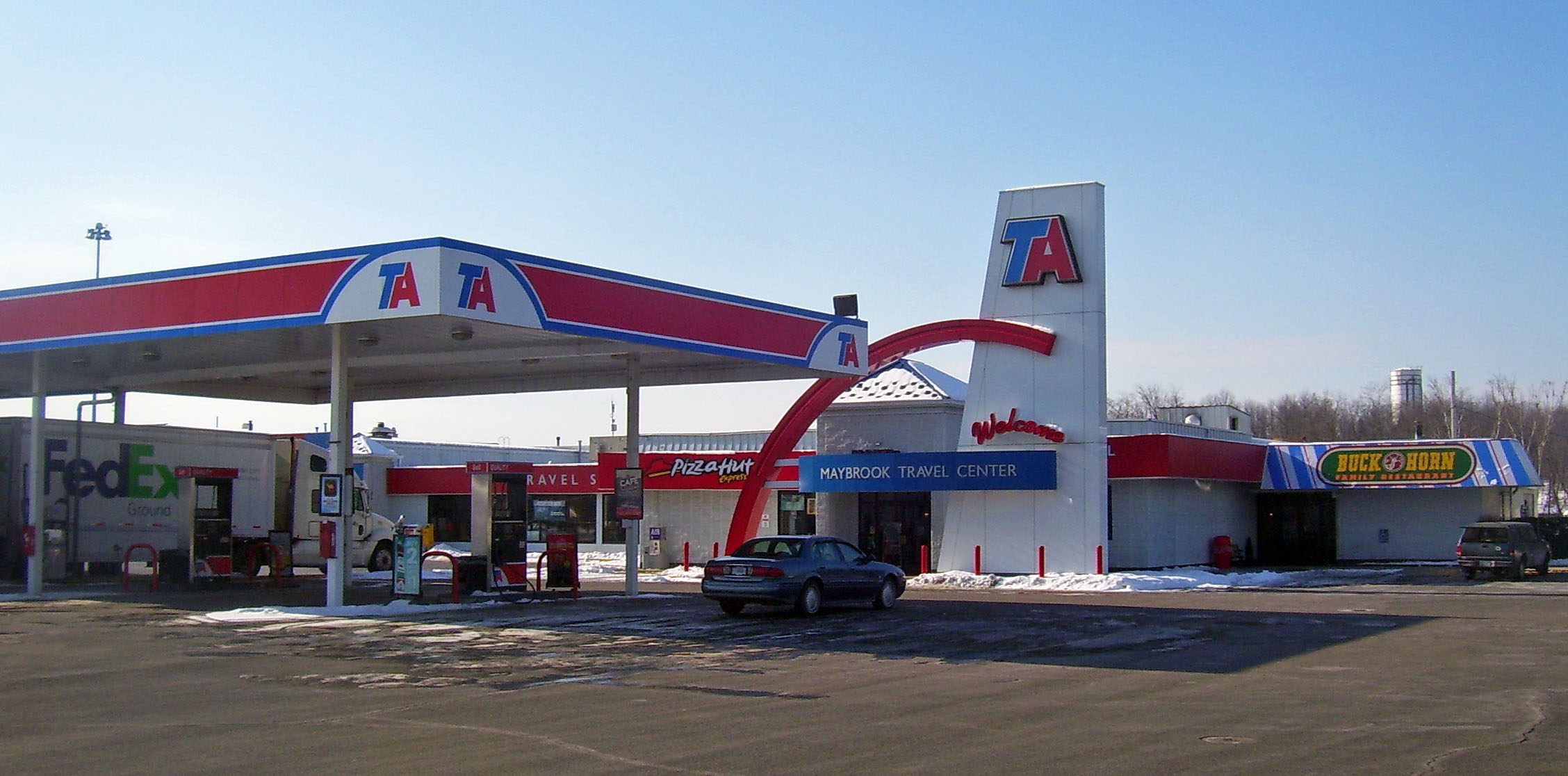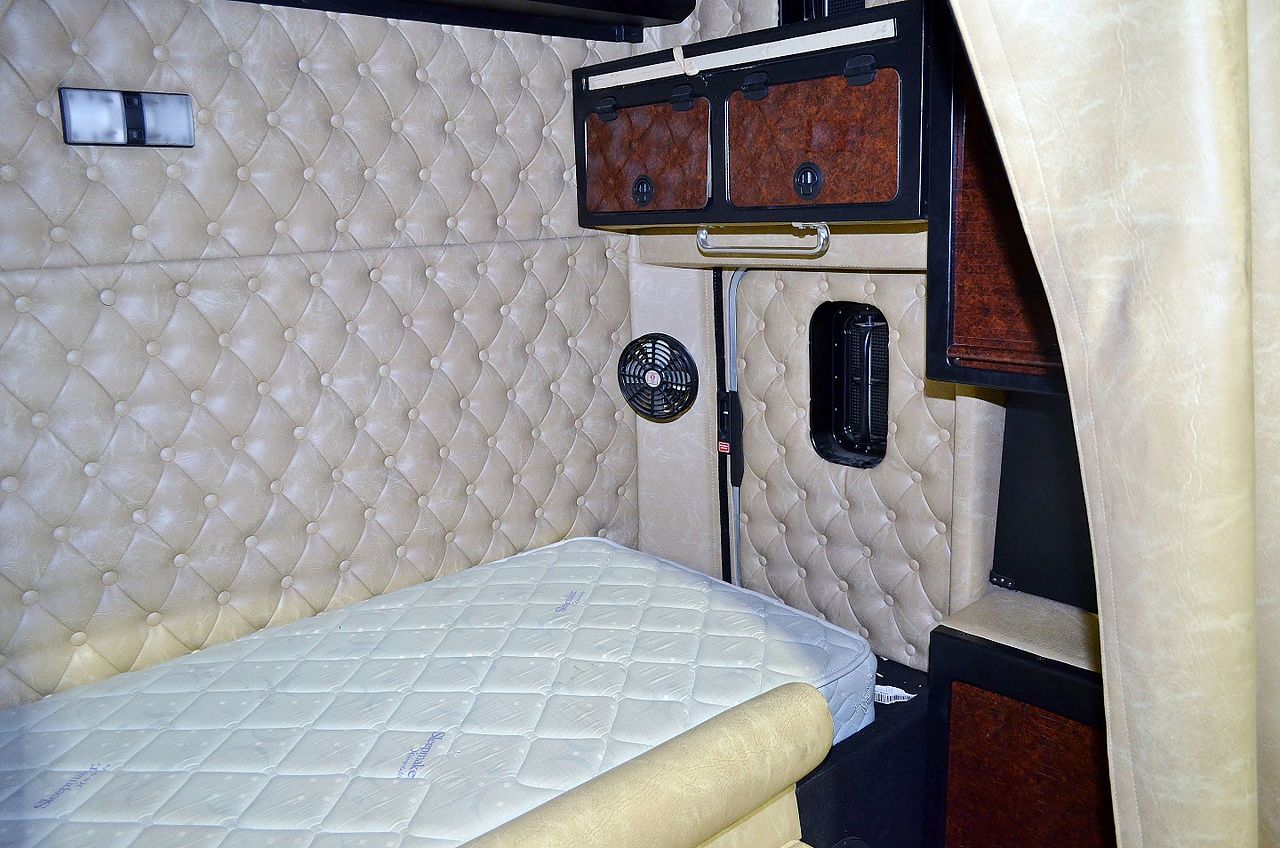Trucking is a demanding job that requires drivers to be highly alert all the time while driving, which means that adequate sleep is crucial for optimal performance.
This brings about a few important questions such as: Do truck drivers get enough rest? How do they sleep on long-distance trips? and most importantly, where do truck drivers sleep?
If you’re considering becoming a trucker, such answers are essential so you know if certain trucking companies ensure their drivers get sufficient rest.
You may not have daily home time (for example, if you’re an OTR driver), but you need to stay alert on the road and make it safely to your destination. For this reason, let’s discuss the sleeping arrangements of truck drivers while out on the road.
Where Do Truck Drivers Sleep?
This question holds two possible meanings: what location they sleep in and if they sleep in their trucks, so we’ll answer both.
What Location Do Truck Drivers Sleep in?

TravelAmerica truck stop, Maybrook, NY
Well, it depends. The most common places for truck drivers to pull up and sleep are company facilities, truck stops, and rest areas along the route or near the delivery site. Some customers will also allow drivers to park and sleep in their parking lots before heading out for the next day.
If you’re concerned about the sleeping location, be sure to inquire about the full details before signing up for the company.
Do Truck Drivers Sleep in their Trucks?
Yes, truck drivers sleep in their trucks, particularly in the sleeper cab part of the vehicle. Truckers who are away from home for one night more will drive a sleeper cab with bunk in the back behind the seats. Some trucks are equipped with double bunks for team drivers.
However, not all truck drivers sleep in their trucks. If you’re a local truck driver, you’ll go home every day after closing. Such truckers will drive a day cab that lacks a bunk behind the driver’s seat.
What is Inside a Sleeper Cab?

Kenworth driving cab, Kenworth Dealer Hall of Fame
Now you know that truck drivers sleep in a bunk behind the driver’s seat called a sleeper cab. But do you know what’s inside a sleeper cab?
Although many people see trucks every day, most of them don’t know how the interior of one is designed. If you do get the chance to see it, you’ll likely be surprised by the level of comfort cramped into the limited space of that tiny compartment.
Basically, a sleeper cab is a tiny room. It’s a home away from home for truck drivers and comes with all the necessary amenities they need to stay comfortable on the road.
Inside a sleeper cab, you’ll find a full-size mattress along with pillows and sheets to make the driver’s sleeping time as comfortable as possible.
Depending on the manufacturer and the preferences of the driver, a sleeper cab may include a small refrigerator or cooler, a television, a microwave, an entertainment system, a thermo-flask, a small wardrobe, and more.
Truck drivers try to make the most out of their sleeper cab when it comes to utility, but keep in mind that there’s only so much to do with such limited space. Some companies will provide their drivers with customized trucks featuring luxurious sleeper berths for maximum comfort, but it’s not reasonable to expect every company to spend a fortune on driver comfort as it’ll affect their bottom line.
Do Sleeper Cabs have Toilets?
No, sleeper cabs don’t come with toilets. They also don’t include sinks or showers. For this reason, truck drivers usually buy a portable toilet to complete the missing aspect of their sleeper berth.
It’s wise for any truck driver to invest in a portable toilet because it’ll save them a lot of time and money. They’ll be able to answer nature’s call right there in the truck, instead of having to pull over every time they need to do their business.
Don’t worry though, there are several types of additives that you can use to minimize odor and break down the waste while on the road.
What if you don’t have a portable toilet? In this case, you have three options: do your business at truck stops, straight in nature, or in bottles while on the move.
Of course, OTR (over the road) drivers should invest in a portable toilet and grooming tools to stay fresh and healthy out there.
How Many Hours of Sleep Do Truck Drivers Get on the Road?
According to the Hours of Service rules of the Federal Motor Carrier Safety Administration (FMCSA), truck drivers are allowed to drive a maximum of 11 hours only after taking a break of 10 consecutive hours.
The regulations also restrict drivers from driving beyond the 14th consecutive hour after resuming duty, which includes time spent on non-driving tasks such as loading, unloading, fueling, pre-trips, and post-trips among others.
On paper, this gives truck drivers plenty of time to sleep and rejuvenate their energy, but does it mean they really get enough rest?
Unfortunately, this may not be the case for many truckers because they wait at the drop to be loaded, unloaded, cleared, as well as sign inventory and bill of lading documents. This alone can take up to 4 hours. Add in the time needed to eat and find a suitable parking spot, and we’re left with less than 5 hours of sleep time.
According to the Large Truck Crash Causation Study, fatigue was the main cause of 13% of crashes where the driver died. So, you can see how critical it is to get enough sleep every day.
Wrap Up
Where do truck drivers sleep? In the sleeper can of their trucks after they find a suitable spot to park while they rest up.
Truckers don’t sleep in hotels because they’re expensive, which interferes with making as much money as possible. Also, hotels waste time checking in and out. Not to mention, most outlets there can’t accommodate trucks.

